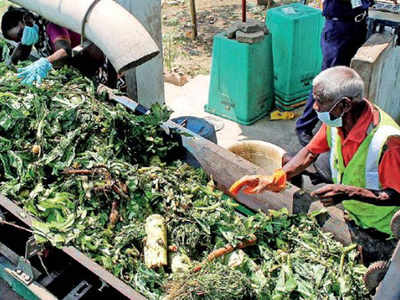The Times of India 19.04.2013
Residents go separate ways to keep streets free of garbage

CHENNAI:
The corporation’s waste segregation initiatives may have failed in the
past but now groups of residents across 60 wards are silently turning
over a new leaf and segregating waste at source.
result: About 200 streets look spic and span. Nearly 300 residents of
Rajeswari Avenue Apartment at Mugalivakkam segregate the garbage they
generate into wet and dry waste. The civic body ran an awareness
programme for residents and distributed two bins to each household, one
for dry waste and the other for wet. The corporation uses plastic waste
to lay roads and plans to generate electricity for street lights from
wet waste.
Corporation officials said they plan to introduce
source segregation of waste in more wards in a couple of weeks. A senior
corporation official said: “We have selected a few wards in each of the
15 zones. We add a few wards to the scheme every week.”
So,
how did it click in these localities? “To start with, we selected places
with relatively more educated residents,” said an official. The
corporation convinced some residential associations to take up source
segregation and, when the results were showing, more associations came
forward to join the programme. “A clean street is a good incentive, they
realised,” the official said.
Residents are happy. J Raman of
Rajeswari Avenue Apartment Residents’ Association said: “We have plans
to generate electricity and manure from the wet waste. We could use
electricity for street lights and the manure for trees.”
Corporation officials said they had conducted public meetings with
residents. “Only if people are involved will this be a success. We are
willing to provide assistance if any residents’ association comes
forward,” said an official.
The city generates at least 4,600
tonnes of garbage a day. An ordinary household generates 25% recyclable
waste, 60% organic waste and 10% hazardous waste. At least 30% of the
garbage is dumped in drains, choking them during the monsoon. Many
vacant plots and pavements have become unofficial dump yards. Source
segregation will reduce the amount of garbage to be disposed off and the
city will look cleaner.
Experts suggested that conservancy
workers be taught to distinguish between dry and wet waste. Officials
said they are planning to distribute pamphlets across the city.
“It is necessary to enforce segregation at source and reduce the load
on the civic body and landfills. Source segregation is a slow process
and cannot be done overnight. It will take 18 to 20 months to implement
it completely,” said Dharmesh Shah of Global Alliance for Incinerator
Alternatives.


